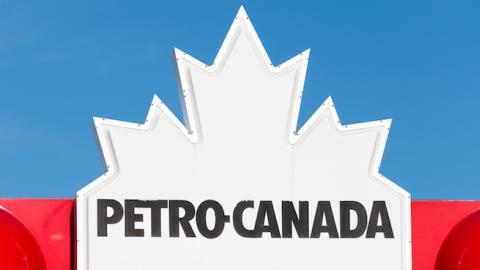Former Prime Minister Stephen Harper's ambition for Canada to become an energy superpower followed the logic of expanding supply. It presumed that demand would be sufficient for this new production, particularly in Canada's major export market, the United States. It must be of some regret to him that things did not work out as he had planned.
Some historians pondering Harper’s legacy will be tempted to consign his failure to hubris and remember the whole episode solely as a cautionary tale. It would be a mistake for Canadians, especially newly elected Prime Minister Justin Trudeau, to do so in this case.
If Canada did not achieve energy superpower status on Harper's watch, the reasons must include dramatic changes in the U.S. energy market that, in combination, lowered demand for Canadian energy imports. For Canada to pursue its potential as an energy superpower – or at least as an energy great power – it needs to develop a path that adjusts to U.S. market conditions, and reduces dependence and risk by obtaining access to additional markets around the world. This essay will examine four main reasons Harper’s energy superpower dream fizzled, in hope of offering a better path to future policymakers.
Reduced US Petroleum Consumption
First, Canadian petroleum supplies have become less important to the United States in the face of stagnating U.S. petroleum consumption. While U.S. consumption of crude oil and petroleum had grown on average at around 1.2 percent per year between 1981 and 2004, since 2005, U.S. demand growth has actually reversed, shrinking by just over 0.8 percent per year on average. Compared to its peak in 2005, today’s U.S. economy uses almost 620 million less barrels of oil per year – a decline of over 8 percent.
Most of this decline can be attributed to two factors, neither of which are significantly influenced by Canadian policy. First, the North American automotive fleet has grown – albeit somewhat begrudgingly – more fuel efficient. Spurred by both consumer demands and government incentives, the Big Three auto manufacturers and their competitors have made vehicles lighter and more aerodynamic, and improved propulsion systems by developing more efficient engines, transmissions, turbochargers, and batteries. While average adjusted fuel economy had declined by 12 percent between 1988 and 2004 as the American dalliance with the SUV blossomed into true love, these technological advances helped to reverse this trend, with average adjusted fuel economy increasing by 22 percent between 2004 and 2015. Given that American motor vehicles account for 44 percent of the country’s oil consumption and 10 percent of world’s, these efficiency improvements are significant, and account for roughly 25 percent of the decline in U.S. petroleum consumption
While improvements in fuel economy have had a significant impact on U.S. petroleum consumption, a second and far more significant factor (accounting for approximately 75 percent of the decline) is the decline in driving. Many have laid responsibility for this at the feet of the Great Recession. The logic of this claim is relatively straightforward: in response to a decrease in purchasing power, drivers choose to cut back on recreational travel, or switch to cheaper alternatives such as public transportation. Although some driving will occur regardless of the price of gas or the state of the economy (for example, commuting to work or school), at least 15 percent is discretionary and thus vulnerable to cuts.
The recession does not account for everything, however. For one thing, the start of the decline in per capita vehicle miles travelled precedes the Great Recession by almost four years. In fact, per capita miles traveled has declined every year since 2004, dropping from around 10,100 miles in 2004, to roughly 9,400 miles in 2013. According to the U.S. Department of Transportation, this is not due to a single event, but rather to an underlying trend of “changing demographics, saturated highways, and a rising preference for compact, mixed-use neighborhoods”. In sum, not only are Americans driving less than they once did, but they are doing so in vehicles that are more efficient.
Increased US Oil Production
Second, and worse still for Canadian aspirations, this reduction in demand has been accompanied by surging production from American oil fields. Although it is still a technology in its infancy, horizontal drilling and shale fracking have fundamentally altered the U.S. energy market, with production growing from five million barrels per day in 2008 to 8.71 million barrels per day in 2014. While prices for oil and natural gas averaged in real terms around USD 79.56 per barrel and USD 4.70 per million BTU respectively between 2004 and 2014, a perfect storm of resurgent U.S. production, declining emerging market demand, and fortuitous geopolitical developments have seen prices for both commodities tumble to roughly half of what they were a year ago.
Although much has been made of the winnowing effect of the current low price environment on U.S. energy companies, their misfortune is by no means beneficial to Canadian aspirations. Indeed, most U.S. firms that survive the price trough are expected to become more competitive in the future as they have only just begun to ascend the fracking technology learning curve. Data from the EIA shows that the output of shale producers per unit of capital has increased by almost 500 percent between 2010 and 2015. Furthermore, compared to Canadian oil sands production, U.S. shale production is often cheaper. Marginal production costs in the two countries average $90 and $73 respectively, which suggests that the current oil glut will likely hurt Canadian producers more than their American counterparts. Add in the longstanding U.S. ban on crude oil exports (which forces a significant share of production to be sold domestically at sub-market rates), and it’s clear why Canadian producers face an uphill battle in their attempts to further expand their presence in American markets.
The Shift from Coal to Natural Gas and Alternative Energy
Third, Canadian energy ambitions have also been stymied by growing importance of natural gas and renewables in American electricity generation. For Canadian natural gas production, the story is in many ways similar to the plight of the country’s oil firms: both sectors face stiff and growing competition from the U.S., and both must contend with a low price environment. While the U.S. produced a little over 59 billion cubic feet of natural gas per day in 2009, by 2014 that would rise to 74.9 billion cubic feet, an increase of 26 percent. Conversely, Canadian exports of natural gas to the U.S. have seen consistent decline, dropping by more than 19 percent from just under 9 billion cubic feet per day to 7.2 billion cubic feet per day over the same period.
Canadian natural gas producers may take some long-term comfort in the fact that U.S. consumption of gas, unlike oil, has been increasing as the Americans transition from coal- to gas-powered electrical generation. This year, gas surpassed coal for the first time in its share of U.S. power generation. The transition has largely been prompted by growing concerns over the environmental impact of coal, expressed through regulatory requirements and tariffs imposed on American power producers. Because of natural gas’ superior emissions profile and low cost, it has emerged as a favorite of utilities and decision makers alike. But it’s more bad news for Canada, because natural gas increasingly competes with other non-coal fuels for power generation, most notably hydro. Given that 19 percent of American hydropower is imported from Canadian producers, the relative decline of hydropower at the hands of natural gas will likely displace yet another category of Canadian energy imports.
Environmental Activism Goes Local
A final spoiler has been the rise of locally-situated environmental activism. Although environmental activism and criticism of the energy industry is by no means new to the U.S., President Obama’s rejection of a presidential permit for the Keystone XL Pipeline represents the emergence of a new form of environmental activism. Rather than attempt to achieve conventional victories in the form of modifications to comprehensive energy policies, many activist groups turned to a different tactic. While the U.S. energy industry has, by most accounts, won the permission – if not the blessing – of policymakers to exploit the opportunities afforded by the shale and natural gas revolution, the industry still relies upon a number of key pieces of infrastructure, such as pipelines, railways, and shipping terminals. Environmental groups have turned these local bottlenecks into chokepoints, using their importance to obtain asymmetrical leverage over the industry as a whole.
Beyond the Super Market
What distinguishes a superpower over a great or middle power in the international system is the capacity to change the system (or aspects of it) unilaterally. Through its energy renaissance, the U.S. has demonstrated that it is in fact an energy superpower still.
Harper can hardly be faulted for failing to foresee the U.S. energy revolution coming. Few people did. If there was an oversight on his part, it was in considering supply and not demand. That may be folly, but it is not hubris.
In contrast, the Obama administration’s rejection of the Keystone XL pipeline was an example of folly and hubris. Folly, because the company can refile for a permit any time, making this action transitory and a poor basis for a presidential legacy on the environment. Folly, because the U.S. administration’s claims about the climate impact of the pipeline and the climate significance of rejecting the permit are exaggerated. And folly because the ritual sacrifice of some Canadian oil imports has been greatly exceeded by the dramatic increase in domestic U.S. fossil fuel production and consumption during the Obama years.
And hubris, because Obama’s treatment of Canadian energy will fuel efforts to build new energy infrastructure, from pipelines to powerlines, that will secure access for Canadian energy exports to markets beyond the U.S. Reliance on the U.S. market was always a risk for Canada, which needs global market access via routes to the sea for its oil and LNG exports in addition to pipeline and powerline connections to U.S. markets in order to get the best prices for its energy resources in all markets.
By taking Canadian energy for granted, and treating the largest U.S. foreign energy supplier shabbily, the enduring legacy of the Obama administration may be that it pushes the Trudeau government and those that come after to strive to realize the Harper vision, and make Canada a true global energy superpower before the end of this century.




















